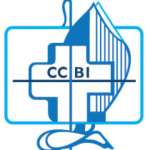New Delhi: Salesians in New Delhi have recently launched a project to provide reach medical care to street children.
They have put into service a mobile medical van staffed with a doctor, a nurse and social workers to provide free check-ups and medication for those under the age of 18.
The van regularly visits 11 locations in the national capital city where street kids tend to congregate or live in makeshift shelters.
Salesian missionaries care for the sick in nearly 100 clinics and hospitals, located mostly in rural areas, around the globe.
The Salesian mobile medical project helps address a number of serious and sometimes chronic health concerns faced by youth living on the streets. For some, this is the only medical care available.
According to Salesian Father Jose Mathew, who oversees the project, the medical team covers four locations daily. It spends two hours in the morning and another two hours in the afternoon and reaches at least 20 kids daily.
The team commonly treats malaria, traumatic injuries, upper respiratory infections, scabies, abdominal pain, abscesses, seizure disorders, conjunctivitis, anemia, viral fevers and infected wounds.
The team also provides youth information and counseling on substance abuse and alcoholism as well as educational sessions on health and hygiene
According to the World Health Organization (WHO), nearly 5.8 million Indians die each year from heart and lung diseases, stroke, cancer and diabetes.
One in four Indians is at risk of dying as a result of a non-communicable disease before they reach the age of 70. Doctors also observe that increasing number of young people now suffers from heart disease, diabetes, cancer and chronic respiratory diseases.
The WHO notes that more than 4 million people in the world die of exposure to indoor household air pollution and another 3.7 million because of outdoor air pollution each year. South Asia accounts for nearly 40 percent of these indoor deaths and 25 percent of outdoor deaths.
The poor in India who live near busy roads and industrial sites are disproportionately affected by air pollution as are women and children who spend more time at home breathing in smoke and soot from cooking stoves.
HIV/AIDS is also a serious concern in India. According to UNICEF, the disease was first detected in the country in 1986 and today there are 5.7 million people living with HIV/AIDS in India. Close to 38 percent of those infected with HIV are women and 55,000 to 60,000 children are born every year to mothers who are HIV positive. It is estimated that the country has more than 220,000 children infected with HIV/AIDS.
With more than 1.2 billion people, India has the world’s fourth largest economy and according to UNICEF, is home to one-third of the world’s poor. Close to 217 million of India’s poor are children. Although more than 53 million people escaped poverty between 2005 and 2010, most remain vulnerable to falling back below the poverty line.
Lack of educational opportunities in India are often due to issues of caste, class and gender and with 44 percent of the workforce illiterate, there is much work to be done. Less than 10 percent of the working-age population has completed a secondary education and too many secondary graduates do not have the knowledge and skills to compete in today’s changing job market.









